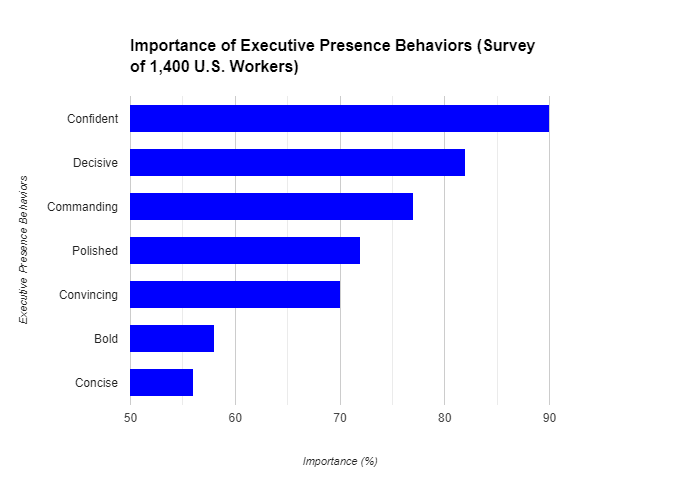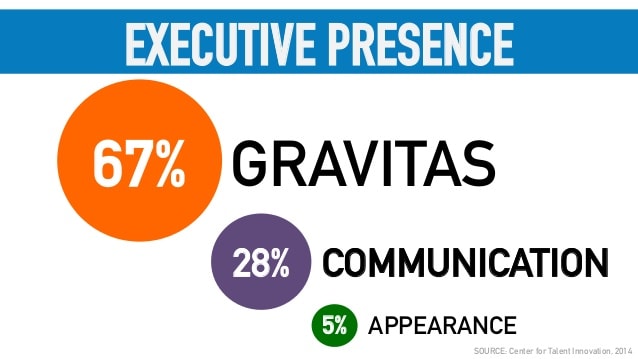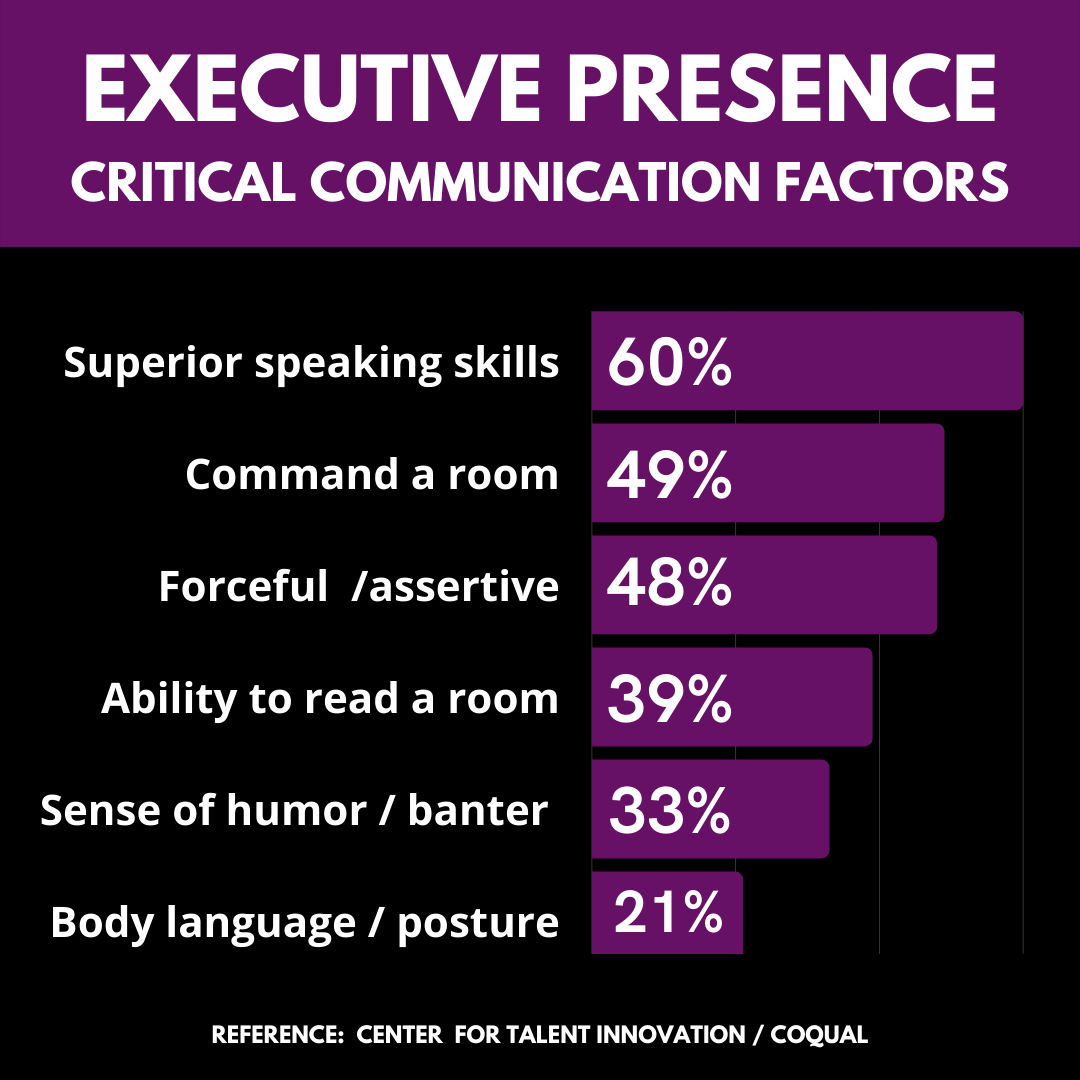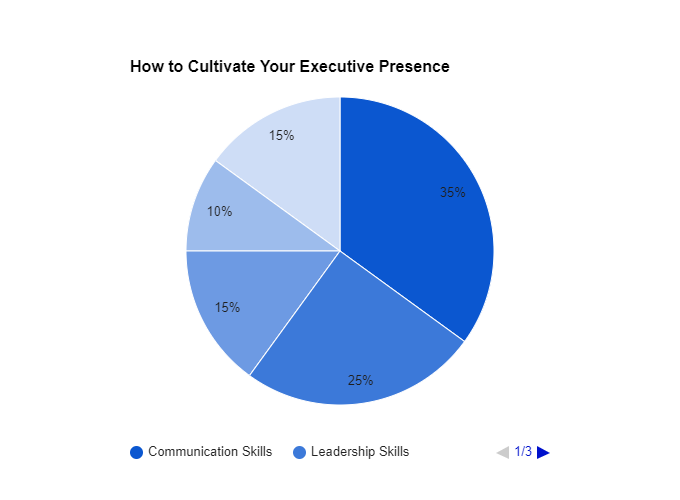Executive presence is essential for leaders across all fields, not just in business. It’s what distinguishes those who rise to high leadership roles from those who do not. Having this presence means not only performing your job well but also influencing others, gaining their trust, and sharing a vision that inspires them to follow.

You’ve probably heard the term “executive presence” in business circles. Executive Presence meaning: It’s that special something that makes people pay attention. When someone enters a room and instantly commands respect, that’s the presence we’re talking about. But it’s more than just looking good or sounding confident.
Good executive presence is about inspiring trust through a mix of calm authority, clear communication, and ethical integrity. It’s about carrying yourself with poise, making sound decisions, and leading by example while staying authentic and empathetic. Those with strong presence naturally command respect and effectively guide others, even in challenging situations.
The Three Pillars of Executive Presence
At its core, executive presence is about how you carry yourself in professional settings. It’s the way you speak, the confidence you project, and the respect you earn. But let’s be honest—there’s more to it than just that. Executive presence is like a recipe, and the key ingredients are gravitas, communication, and appearance.

Imagine you’re sitting in a boardroom, and the discussion is intense. There’s a lot at stake. In walks a person who, without saying a word, shifts the energy in the room. They listen thoughtfully, speak with authority, and make decisions with a level-headedness that reassures everyone. That is, executive presence is a combination of gravitas, communication skills, and appearance.
Gravitas: The Foundation of Leadership
Gravitas. It sounds heavy, and honestly, it kind of is. But in a good way. Gravitas is that weightiness that makes people take you seriously. Picture this: You’re in a tense boardroom meeting, and things are heating up. Then, someone walks in, and suddenly, the room feels different. They don’t rush to speak; they listen, they think, and when they finally talk, everyone listens. That’s gravitas. It’s about being calm under pressure, making tough decisions without flinching, and staying composed even when things get messy. Leaders with gravitas don’t just react—they respond thoughtfully, and that’s what sets them apart.
Communication: The Art of Influence
Let’s be real—if you’ve got all the gravitas in the world but can’t communicate, it’s not going to get you very far. Communication is just as crucial as gravitas. Think of it this way: It’s not just about what you say but how you say it. Whether you’re addressing a room full of executives or having a one-on-one with a team member, your words need to inspire and motivate.

The communication component of executive presence is about following the 3 C’s:
- Be concise
- Be credible
- Be compelling
Here’s a quick tip: Follow the three Cs of communication—be concise, be credible, and be compelling. And remember, communication isn’t a one-way street. Great leaders know how to listen, too. They make others feel heard and valued, and that’s where real influence happens.
Appearance: The Visual Impact
I know. We all say, “Don’t judge a book by its cover,” but let’s face it, appearance matters, especially when it comes to executive presence. Now, I’m not saying you need to show up in a three-piece suit every day, but looking the part is important. Your appearance should match your role and the expectations of your organization. When you look like a leader, it can give you the confidence to act like one—and others will see you that way, too.
Visual appearance makes a first impression, and first impressions, whether conscious or subconscious, are powerful.
As you progress in an organization, executive presence becomes increasingly key to your ability to be an influential leader who has a positive impact on the strategy and direction of the business, as well as the lives of the people who work for and with it.
Continuous Learning: Committing to Personal Growth
Executive presence involves a commitment to continuous learning and personal growth. Leaders who excel in this area are always improving their skills and adapting to new challenges. Incorporating emotional intelligence into this journey is key—it helps you understand and manage emotions effectively, fostering greater empathy and insight in your leadership. And, the more significant the opportunity, the more important executive presence becomes.
Gravitas: The Cornerstone of Executive Presence
Gravitas is more than just staying calm under pressure—it’s about leading with authority and earning respect. Let’s dive into what makes gravitas so powerful:
- Confidence Under Pressure: Imagine being in the middle of a crisis. A leader with gravitas doesn’t panic. They stay cool, make decisions, and keep things moving forward. That’s the kind of confidence that earns trust.
- Emotional Control: Gravitas isn’t just about being serious all the time. It’s about managing your emotions and understanding others’. Leaders with gravitas can show empathy without losing their composure.
- Integrity and Ethics: Trust me, gravitas and ethics go hand in hand. Leaders with gravitas make decisions based on strong moral principles. They’re the ones you can count on to do the right thing, even when it’s tough.
- Vision and Strategic Thinking: Leaders with gravitas have a way of seeing the bigger picture. They’re not just thinking about today’s problems but planning for the future, and they’re strategic in their decisions.
- Effective Communication: They don’t just talk—they communicate. Leaders with gravitas make sure their words matter, and they listen just as well as they speak.
- Poise and Demeanor: It’s not just what they say, but how they carry themselves. Leaders with gravitas have that calm, confident body language that says, “I’ve got this.”
These aspects help leaders command respect, inspire confidence, and effectively guide others.
Good executive presence is the subtle yet powerful blend of confidence, clarity, and character that sets a leader apart. It’s the ability to command a room, communicate effectively, and make decisions that others trust. People with good executive presence present themselves as calm, even-keeled, composed, well-prepared and in control at all times.
Practice the art of executive presence by engaging in one or more of the following skills: active listening, exhibit emotional intelligence, exude a quiet confidence, be more self-aware or inspire others through instilling confidence in them.
Why Executive Presence Matters
So why should you care about executive presence? Well, in today’s fast-paced business world, having the right skills and experience is great, but it’s not enough. To climb the ranks and lead effectively, you need to be seen as someone who can handle the pressures of leadership. Executive presence helps build that perception.
And here’s the kicker—executive presence isn’t just for those at the top. Whether you’re managing a team or just starting your career, developing these traits can set you apart. Think of it as embodying leadership before you even get the title.
How to Cultivate Your Executive Presence
Alright, so you’re sold on the idea of executive presence. But how do you get there? It’s not something you’re born with; it’s something you can develop. And it starts with being aware of how you come across in the workplace.

Taking time to cultivate your executive presence using the questions and tips above will establish you as a committed, confident leader who leads with courage and compassion – and you will feel more fulfilled.
What does it look like to you?
When it comes to learning how to cultivate executive presence, it helps to look at examples in your own workplace. Look around your organization. Who are the leaders who display executive presence?
- How do they dress, behave and talk?
- What qualities and characteristics do they exhibit?
- What energy do they exude?
- How do they communicate?
- How do they connect and interact with those above them, with their peers and with their team?
But don’t stop there. Seek feedback—ask others how you come across in meetings or under stress. Work on your communication skills, both in speaking and listening. Practice staying calm in difficult situations, and pay attention to how you present yourself, both in character and appearance.
Developing Your Executive Presence
To begin developing your executive presence, seek feedback. These will enable you to know how you appear in the meetings or when under stress. It is important to work on your communication skills for both listening and speaking. In addition, you should train yourself to stay calm when facing difficult situations and also be careful about how you present yourself both through your character and dressing.
Remember that executive presence is not innate but can be nurtured. Focusing on gravitas, communication and appearance enables others to view you as a potential leader.
How to Develop Your Executive Presence
Here are a few practical steps to help you cultivate your executive presence:
- Master Your Communication Skills: Aim to be clear, confident, and persuasive. Your words should carry weight, and your ideas should inspire action.
- Exude Confidence: Believe in yourself and your abilities. Confidence is contagious, and when you believe in yourself, others will too.
- Practice Emotional Intelligence: Understand your emotions and those of others. This will help you connect on a deeper level and lead with empathy.
- Develop a Professional Image: Dress appropriately for your role and always act in a way that commands respect.
- Be Assertive: Speak your mind confidently but with respect for others. Assertiveness is key to being seen as a leader.
- Lead with Empathy and Authenticity: Show that you genuinely care about others and be open with them. This builds trust and strengthens relationships.
- Seek Feedback: Always be open to feedback and use it as a tool for continuous improvement.
Great executive presence is the seamless blend of character, clarity, and conviction that enables a leader to motivate and influence others effectively.
“Exceptional executive presence recognize by its ability to seamlessly blend confidence, clarity, and authenticity. It’s evident when a leader inspires trust, commands respect, and influences others through their poised demeanor and effective communication.”
How to improve your executive presence
As challenging as it seems, executive presence can be improved. When you are being told to improve your executive presence, the main areas to work on are confidence, communication, gravitas and presence.
Exude self-confidence
Self-confidence is the bedrock of executive presence. Leaders must believe in themselves before others can believe in them. It’s about knowing your strengths, acknowledging your weaknesses, and having the courage to tackle challenges head-on. To boost your self-confidence, set achievable goals, seek constructive feedback but don’t take it personally, and continuously invest in self-care and self-compassion. Remember, confidence isn’t built overnight; it’s a journey of self-discovery and growth.
Communicate concisely and assertively
Researchers recommend being clear and concise. Tailor your message to your audience, whether it’s a board of directors, team members, or clients. The key is projecting a confident and action-oriented message, stating your recommendation first, then adding analysis and detail as needed. Your ideas and opinions are valuable and deserve to be heard. By recognizing your value, you can approach assertiveness from a place of confidence and self-assurance.
Develop Gravitas
Having gravitas means leading and influencing through one’s presence and demeanor, commanding respect and admiration from others. People who possess gravitas remain calm and composed under pressure, exuding a sense of authority and making a lasting impression in all interactions. Practicing active listening, engaging in strategic thinking, and improving decision-making skills is essential to develop gravitas.
Stay Present
Stay mentally present. While you may need to deal with many challenges simultaneously, being entirely focused on one problem at a time is essential when meeting or interacting with others. Avoid multitasking or mind-wandering. To fully engage in conversations, build connections, listen, and ask open-ended questions. Non-verbal cues often speak louder than words. Pay attention to your body language, maintaining firm eye contact, adopting a confident stance, and using purposeful gestures. These elements can convey authority and confidence effectively.
Great executive presence combines poise under pressure with a strong sense of integrity, allowing leaders to guide others with calm assurance.
The Impact of Executive Presence in the Corporate World
In the corporate world, executive presence is a game-changer. It’s not just about how you’re perceived but how effectively you can inspire and lead your team. A leader with strong executive presence can set the tone for the entire workplace, fostering a culture of trust, collaboration, and motivation.
And let’s be honest—companies are more likely to promote those who exhibit executive presence. It shows that you’re ready for the responsibilities of higher leadership roles. Whether it’s communicating effectively, inspiring confidence, or just setting the right example, executive presence can make a huge difference in your career.
Some key benefits of having a strong executive presence include:
- Effective communication: Leaders with executive presence can articulate their thoughts and ideas clearly, prompting open and productive dialogue among their teams. They can convey critical information more efficiently and ensure seamless communication throughout the company.
- Promotion potential: Companies are likelier to promote individuals who exhibit executive presence, as they inspire confidence among their peers and superiors. These individuals are perceived as capable of handling the increased responsibility of higher leadership positions.
- Positive workplace influence: A leader with executive presence can set the tone for the workplace, fostering an environment of collaboration, trust, and motivation. They exude an air of authority, which translates into increased respect from their peers and subordinates.
Developing an executive presence can be a game-changer at any stage of your career. Whether you’re aiming for that next big promotion or just want to be more effective in your current role, cultivating these traits will set you up for long-term success. It’s about positioning yourself as a leader, even before you have the title. According to a study by the Center for Talent Innovation , executive presence makes up 26% of what senior leaders say it takes to get the next promotion.
Mastering executive presence isn’t an overnight transformation; it’s a journey of self-discovery and growth. By honing your gravitas, communication, and appearance, and embracing continuous learning and emotional intelligence, you set yourself apart as a leader who inspires trust and commands respect.
